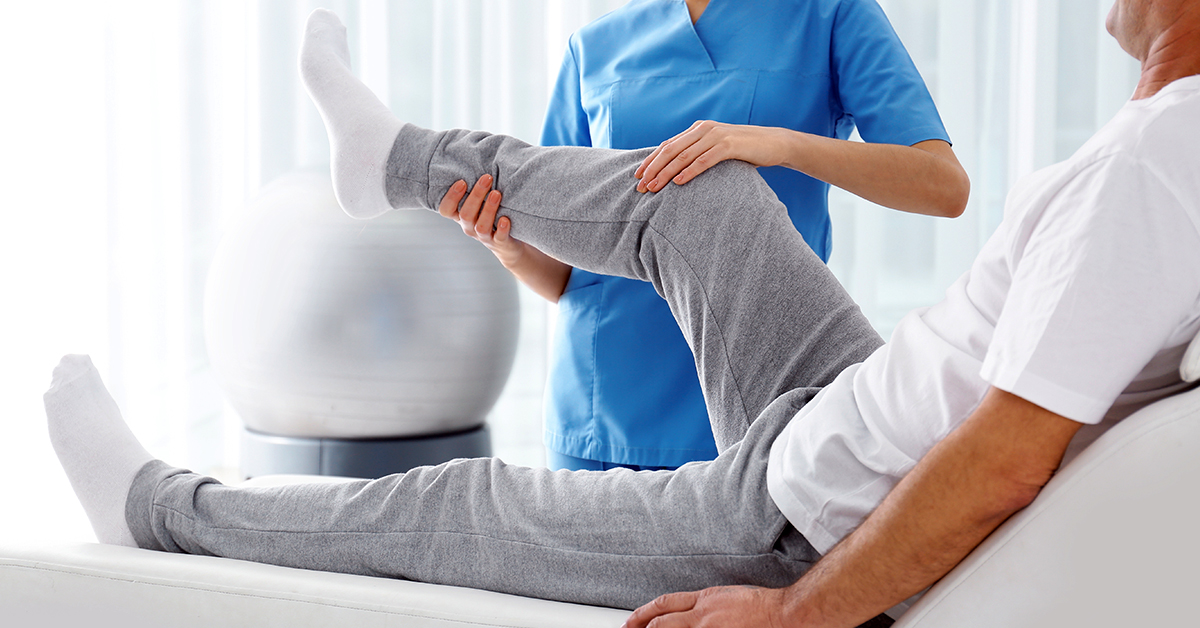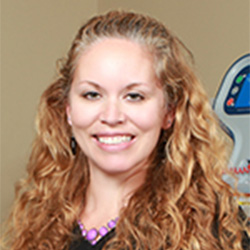

COURTESY PHOTO
William “George” Waidand, 56, is a digital press operator for a printer in Sanford. His job involves loading the press with paper and adjusting software to run print jobs to the client’s specifications.
“We mostly print labels for online companies around town and across the nation,” George elaborates. “I’ve been with my current company for seven years, but I’ve been in the printing business for about 16 years. I just fell into it. I started in the mailroom at one company and worked my way up to running the presses.”
Operating a printing press is physically demanding. It requires lots of kneeling, stepping up and down, bending, and crouching. Recently, it became increasingly difficult for George to perform these tasks due to bone-on-bone arthritis and the resulting pain in his knees.
“I couldn’t really do my job completely because it requires using my knees quite a bit, and they were hurting,” he confirms.
“The pain got up to a nine on a scale of one to 10. It was so bad sometimes that I felt like I was going to throw up.”
Earlier this year, the pain reached a crescendo, so George’s primary care physician referred him to an orthopedic surgeon for a total knee replacement. The left knee was replaced in June.
Three weeks of home therapy followed. When George was ready to begin rehabilitating the knee in earnest, he asked his wife for advice.
“My wife grew up with the owner of Barr & Associates Physical Therapy, so she suggested I go there,” George relates. “It was one of the best things I’ve ever done.”
“Fantastic” Outcome
Jacob Barr, PT, DPT, MTC, CEAS, CHT, opened his practice in 2008 with the philosophy that all patients deserve exceptional, progressive and cost-effective one-on-one treatment.
During his first visit to the practice, George met with Jennifer Young, DPT, a doctor of physical therapy.
“Mr. Waidand came to our clinic on July 7,” Dr. Young recalls. “He was experiencing common conditions related to knee replacement surgery, such as swelling, decreased range of motion and gait abnormalities. He was no longer using a walker or cane, but he was limping.
“We began his therapy with soft tissue mobilization, working on the muscles and tendons around the knee to decrease swelling and increase mobility.
“We also performed passive range-of-motion exercises to improve the range of motion in his knee.
“As he progressed, we had him squatting, using the stationary bike and doing general strengthening exercises.”
Dr. Young also instructed George on some home exercises to further improve mobility and strength in the new knee. George was discharged from therapy at Barr & Associates in August.
His goal was to return to work in September, and he did.
“I’m doing really well now,” George enthuses. “All the issues with my left knee got resolved quickly. Walking is a lot better. I wear a brace on my bad knee, but the knee I had replaced works great. I’m even kneeling on it.
“There’s been 100 percent improvement in the pain in that knee. The pain level is now zero, although my right knee still hurts.
“Dr. Young and her team worked me pretty hard, but they were great. Dr. Young is quite funny. Everyone there was very good to me. The office is full of professionals.
“I can’t wait to have my right knee replaced. When I do, I’ll go right back to Barr & Associates Physical Therapy.”





Leave a Reply